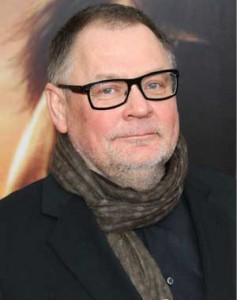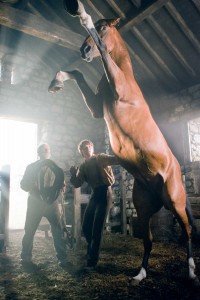
In its visual sweep and narrative scope, War Horse, directed by Steven Spielberg, harkens back to the kinds of movies Hollywood used to make. Much of the film’s impact derives from the eye-filling images created by director of photography Janusz Kaminski. And at a time when technology is remaking cinematography, the DP relied almost entirely on the cinematographer’s traditional toolbox – lighting, filters and framing.
“War Horse is a very old-fashioned way of moviemaking,” said Kaminski. “Everything is done in camera. All of the colorization of the images is done in camera; all of the compositions are in camera. That’s how I do it. And I don’t create the movie in the DI [digital intermediate]. I create the movie in the lab. I have photochemical dailies to go with digital dailies. The photochemical transfer was the guiding print for the DI.”
War Horse is based on a children’s book by Michael Morpurgo that was turned into a stage vehicle that won five Tony Awards including best play. It’s the story of a young boy, Albert, who raises and bonds with a horse, Joey. When World War I breaks out, Joey is commandeered along with other horses to do duty on the continent in the punishing conditions of the “Great War.” In the end he returns and is reunited with Albert.
The film represents the 13th collaboration between Kaminski and Spielberg, dating back two decades to the making of Schindler’s List, which garnered the DP his first Oscar for best cinematography in 1993. The second was for Saving Private Ryan in 1999. He was also nominated for Amistad, and French foreign film, The Diving Bell and the Butterfly.
Lighting the characters – and Joey – was an important consideration in filming the movie, especially in full daylight, which is usually not the case. “You want to have the characters illuminated with a sufficient exposure so you can at the same time get the richness of the landscape and the beauty of the sky and clouds behind them so that meant employing very strong lights,” he noted. “It’s about people shaping the land and their struggles to maintain their livelihood, so the land is a big part of the storytelling. You wanted the people to stand out from the landscape.”
The outdoor scenes in the film were shot in Devon, a picturesque area in the southeast of England and in the moorlands of adjacent Dartmoor National Park. The English nature shots in Devon captured by Kaminski were some of the lushest since those captured by cinematographer Freddie Young in Ryan’s Daughter directed by David Lean.

Lighting Joey was even more of a challenge. (Actually five horses played Joey; each had a different skill, like the ability to lie down on command or turn his head toward the back). “It’s much easier to light a person than a horse, which can get flustered by the bright set-up,” said the DP. “We had to treat the horse like a movie star so we could light him properly.” Because there was very little sheen on the horses, several lighting units were designed specifically for them. “At night or when you see the horse moving at a very fast speed through the landscape lighting was technically a big issue.”
One extended tracking shot in War Horse that moves through the infamous WWI trenches and captures soldier after soldier mired in the mud and vermin was shot by using a camera mounted on a technocrane that was itself placed on rails. “That was very difficult to pull off and I’m very proud of that shot,” said the DP. For the scenes in the trenches, two films influenced Kaminski – A Very Long Engagement, photographed by Bruno Delbonnel for director Jean-Pierre Jeunet, and The Curious Case of Benjamin Button, lensed by Claudio Miranda for director David Fincher.
The films of John Ford, the iconic director of Westerns including Stage Coach and The Searchers, were also an impact on Kaminski and Spielberg, though no specific film was referenced. “John Ford is ranked as one the best directors for exterior storytelling. He has become part of our tradition and the language of the cinema so naturally he had some influence.”
The film was shot Arricams using two KodakVision 3 negative film stocks with Arri/Zeiss Master Prime lenses. Multiple filters were often employed. The final shot of the silhouette of Albert on Joey against a brilliant red-orange sunset, was deliberately an homage to the well-known shot at the end of Gone With the Wind. “We shot at sunset, and there really was no color in the sky, but I used four filters and that created the red sky.”
Having worked together for so long, Spielberg and Kaminski have an unspoken language with each other. “We both have a similar take on how to tell stories,” the DP noted. “He works with the actors and the verbal language and I work with the shadows and the non-verbal and it’s a blast.” Kaminski is currently lensing Spielberg’s next film, Lincoln.





